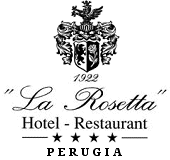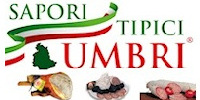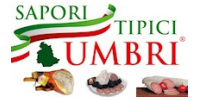Our network:
Wednesday 16 April 2025
From the forest
Wild mushrooms and asparagus are one of Umbria's most precious natural riches.
While many are acquainted with wild Mushrooms, that are used in many Umbrian recipes, the strong taste of wild asparagus is less familiar to most. They are excellent in omelettes and sauces.
MUSHROOMS
A little background trivia: the ancient Romans and Greeks are thought to be among the earliest civilisations to appreciate mushrooms. The Romans were particularly fond of them. After the fall of the Roman Empire, however, the fear of poisonous mushrooms grew to such an extent that they were hardly eaten anymore, until the Italians reclaimed them and their popularity spread throughout Europe once again. Among the thousands of varieties of cultivated and wild mushrooms that grow all over the world today, one of the most universally popular species is the Boletus Edulis, or "Porcino", as it is known in Italy.
What they look like: size, shape, colour, taste, and texture vary enormously from one species to another.
The prime Umbrian musheroom is the Boletus Edulis, also known as the Porcino Umbro. Leccinum and Suillus, which are also popular varieties, generally grow near certain trees or plants. By contrast, the Boletus Edulis is most commonly found in pine forests. Boletes differ from other mushrooms in that they have pores rather than gills on the underside of the cap. Thousands of spores are released from the inner walls of hundreds of tiny round tubes that make up the underside of the cap. This spore-bearing area resembles and acts like a sponge.
Selection tips: In general, look for firm, evenly coloured mushrooms. Avoid mushrooms that are broken, damaged, or have soft spots, as well as those that seem damp or smell of mildew. It is adviseable to select the mushrooms one by one, choosing those that are similar in size so that they cook evenly.
Storage tips: Fresh mushrooms can be stored unwashed in the refrigerator for up to three days. Don't wrap them in plastic. They'll stay firmer placed in a single layer on a tray and covered with a damp paper towel.
How to eat them: Rinse with cold water and blot dry with paper towels, or wipe off with a damp paper towel. Use immediately after cleaning, or the flesh will quickly darken. Trim 1/4" off the stems.
Peak growing season: While most mushrooms are available year-round, many are at their best in fall and winter.
Health benefits: Unlike most other vegetables, mushrooms contain two important B vitamins: niacin and riboflavin. The Shiitake is a particularly healthy mushroom and contains lentinan, an anti-oxidant tht also bolsters the immune system.
Nutritional info: Although the breakdown varies a little according to type, in general a half cup of raw mushrooms weighs in at a mere 9 calories, providing 0.4 gram of fiber, 0.7 gram of protein, 0.1 gram of fat (none of it saturated), 1 milligram of sodium, and no cholesterol.
ASPARAGUS
What it looks like: a slim green spear, often tinged purple at the tip.
Selection tips: Look for firm, bright green stalks with tight, compact heads. Avoid spears that are dry, limp, or wrinkled, or have ruffled tips. Thinner spears are usually more tender, and you'll want to choose similarly sized ones so they'll cook evenly. One pound equals 16 to 20 spears, or about two cups chopped.
Storage tips: Try not to buy asparagus too long before you intend to cook them. When you get them home, don't wash them. Either stand the stalks upright in about an inch of water and cover them (and the container) with a plastic bag, or wrap the stem ends in a wet paper towel and seal the asparagus in a plastic bag. Either way they will keep for only about three days.
How to eat them: First wash the asparagus thoroughly. You don't want to soak them; just hold the stalks upside down under cold water and shake them a bit to release any sand that might be caught in the tips. Then hold both ends of each spear and bend; the tough, fibrous base until it snaps off. (This step is unnecessary in thinner spears, that are completely edible.) Boil them. To boil asparagus, tie the stalks together with kitchen string, then stand them up in a cooking pot so the tips are just above the water line. If the stalks are too tall to allow you to use the saucepan's regular lid, invert another saucepan on top instead. (Note: glass and ceramic coffeepots make ideal asparagus cookers.) Cook them only until they're crisp-tender, then remove them from the heat and drain them thoroughly. You can also cook asparagus in the microwave. Arrange the stalks spoke-fashion, tips toward the center, in about two tablespoons of water in a round baking dish. Cover and cook at HIGH for 7 to 10 minutes, or until crisp-tender. Be sure to rotate the dish half way through if you're not using a carousel. Eating them raw: slice thin, fresh asparagus and add to a salad, or serve whole spears alongside your favorite dip. Peak growing season: While hothouses provide asparagus year-round, the freshest are grown between February and June.
Health benefits: Eating this tender vegetable is an excellent way to help protect yourself against heart disease, as it contains lots of folate, as well as vitamins E, A, and C. In addition to helping your heart, folate (a B vitamin) helps cells regenerate; vitamin E fights Type II diabetes; and vitamins A and C help hold cancer and cataracts at bay. Asparagus also contains potassium, which helps lower blood pressure and perhaps even cholesterol.
Nutritional info: One half cup of boiled asparagus (about six spears) equals approximately 22 calories, 1.4 grams of fiber, 2.3 grams of protein, 0.3 gram of fat (0.1 of it saturated), 10 milligrams of sodium, and no cholesterol.
While many are acquainted with wild Mushrooms, that are used in many Umbrian recipes, the strong taste of wild asparagus is less familiar to most. They are excellent in omelettes and sauces.
MUSHROOMS
A little background trivia: the ancient Romans and Greeks are thought to be among the earliest civilisations to appreciate mushrooms. The Romans were particularly fond of them. After the fall of the Roman Empire, however, the fear of poisonous mushrooms grew to such an extent that they were hardly eaten anymore, until the Italians reclaimed them and their popularity spread throughout Europe once again. Among the thousands of varieties of cultivated and wild mushrooms that grow all over the world today, one of the most universally popular species is the Boletus Edulis, or "Porcino", as it is known in Italy.
What they look like: size, shape, colour, taste, and texture vary enormously from one species to another.
The prime Umbrian musheroom is the Boletus Edulis, also known as the Porcino Umbro. Leccinum and Suillus, which are also popular varieties, generally grow near certain trees or plants. By contrast, the Boletus Edulis is most commonly found in pine forests. Boletes differ from other mushrooms in that they have pores rather than gills on the underside of the cap. Thousands of spores are released from the inner walls of hundreds of tiny round tubes that make up the underside of the cap. This spore-bearing area resembles and acts like a sponge.
Selection tips: In general, look for firm, evenly coloured mushrooms. Avoid mushrooms that are broken, damaged, or have soft spots, as well as those that seem damp or smell of mildew. It is adviseable to select the mushrooms one by one, choosing those that are similar in size so that they cook evenly.
Storage tips: Fresh mushrooms can be stored unwashed in the refrigerator for up to three days. Don't wrap them in plastic. They'll stay firmer placed in a single layer on a tray and covered with a damp paper towel.
How to eat them: Rinse with cold water and blot dry with paper towels, or wipe off with a damp paper towel. Use immediately after cleaning, or the flesh will quickly darken. Trim 1/4" off the stems.
Peak growing season: While most mushrooms are available year-round, many are at their best in fall and winter.
Health benefits: Unlike most other vegetables, mushrooms contain two important B vitamins: niacin and riboflavin. The Shiitake is a particularly healthy mushroom and contains lentinan, an anti-oxidant tht also bolsters the immune system.
Nutritional info: Although the breakdown varies a little according to type, in general a half cup of raw mushrooms weighs in at a mere 9 calories, providing 0.4 gram of fiber, 0.7 gram of protein, 0.1 gram of fat (none of it saturated), 1 milligram of sodium, and no cholesterol.
ASPARAGUS
What it looks like: a slim green spear, often tinged purple at the tip.
Selection tips: Look for firm, bright green stalks with tight, compact heads. Avoid spears that are dry, limp, or wrinkled, or have ruffled tips. Thinner spears are usually more tender, and you'll want to choose similarly sized ones so they'll cook evenly. One pound equals 16 to 20 spears, or about two cups chopped.
Storage tips: Try not to buy asparagus too long before you intend to cook them. When you get them home, don't wash them. Either stand the stalks upright in about an inch of water and cover them (and the container) with a plastic bag, or wrap the stem ends in a wet paper towel and seal the asparagus in a plastic bag. Either way they will keep for only about three days.
How to eat them: First wash the asparagus thoroughly. You don't want to soak them; just hold the stalks upside down under cold water and shake them a bit to release any sand that might be caught in the tips. Then hold both ends of each spear and bend; the tough, fibrous base until it snaps off. (This step is unnecessary in thinner spears, that are completely edible.) Boil them. To boil asparagus, tie the stalks together with kitchen string, then stand them up in a cooking pot so the tips are just above the water line. If the stalks are too tall to allow you to use the saucepan's regular lid, invert another saucepan on top instead. (Note: glass and ceramic coffeepots make ideal asparagus cookers.) Cook them only until they're crisp-tender, then remove them from the heat and drain them thoroughly. You can also cook asparagus in the microwave. Arrange the stalks spoke-fashion, tips toward the center, in about two tablespoons of water in a round baking dish. Cover and cook at HIGH for 7 to 10 minutes, or until crisp-tender. Be sure to rotate the dish half way through if you're not using a carousel. Eating them raw: slice thin, fresh asparagus and add to a salad, or serve whole spears alongside your favorite dip. Peak growing season: While hothouses provide asparagus year-round, the freshest are grown between February and June.
Health benefits: Eating this tender vegetable is an excellent way to help protect yourself against heart disease, as it contains lots of folate, as well as vitamins E, A, and C. In addition to helping your heart, folate (a B vitamin) helps cells regenerate; vitamin E fights Type II diabetes; and vitamins A and C help hold cancer and cataracts at bay. Asparagus also contains potassium, which helps lower blood pressure and perhaps even cholesterol.
Nutritional info: One half cup of boiled asparagus (about six spears) equals approximately 22 calories, 1.4 grams of fiber, 2.3 grams of protein, 0.3 gram of fat (0.1 of it saturated), 10 milligrams of sodium, and no cholesterol.
| Have a comment or question? Send a message to our editors at: contactus@perugiaonline.com |
| Up |

General information
• General travel tips • Weather information
• Tourist guides and visit guided in Umbria
• Local opening times
• Useful - emergency numbers
• Perugia for living
• Hospital Perugia
• Hospital Foligno
• Real Estates and Home Builders
• Homes for sale, property, apartments selling
Transport in town
• Traffic restrictions • Parking
• Buses & Taxis
• Town map
• How to reach Perugia by car
• How to reach Perugia by train
• How to reach Perugia by Air
Transport out of town
• Airport • Trains
• Rent a car
• Local and national buses

Where to Stay
OFFERS & LAST MINUTE
Where to eat and drink
• Restaurants and Trattorie • Pizzerie
• Pubs

Art and monuments
• Rocca Paolina • Ipogeo dei Volumni
• Etruscan town walls
• Palazzo dei Priori
• Porta Sant' Angelo
• Acqueduct
• Maesta delle Volte
• Collegio della Mercanzia
• Collegio del Cambio
• Fontana Maggiore
Art and religion
• Cathedral of San Lorenzo • Church of San Filippo Neri
• Oratory of San Bernardino
• Church of Sant' Ercolano
• Church of San Domenico
• Church of San Pietro

Museums and galleries
• Historic Museum Perugina • Galleria Nazionale dell'Umbria
• Museo Archeologico
• Palazzo della Penna
• Accademia delle Belle Arti
• Museo di Storia Naturale
• Museo Capitolare San Lorenzo
• Cappella di San Severo
Art and tourist attractions
• Palazzo Capitano del Popolo • Botanical garden
Booking.com
• MUSIC • EXHIBITIONS • COURSES • COMPETITIONS & PRIZES • FOLKLORE • EVENTS • DANCE & BALLET • MEETING & CONFERENCES • CONGRESS • KIDS • Typical Products FAIRS • THEATRE • SPORT EVENTS • LEISURE • LIFESTYLE • WHERE TO DINNER • NIGHTLIFE • CURIOSITY • VIDEO • BOOKS
• Italian language courses
• The Amusement Park : La Citta della Domenica
• Golfing holidays
• Nature Walks Around Cascia:To Cascia via the Scoglio di Santa Rita, the vast rocky pyramid that dominates the village of Roccaporena
• Cooking courses
• Shopping in Perugia
• Perugia Hotel Tevere
• Assisi Villa Giulia
• The islands - boat tours
• Eating well by Lake Trasimene
• Bathing - Lake Trasimene

• Wellness in Umbria - Perugia area
• Weddings in Umbria
• Honeymooning in Umbria
• Charme & Relax in Umbria
• Home in Umbria
• Cooking schools
• University for Foreigners Perugia
• Design, Fashion, Visual arts and Communication Schools
• Perugia for Studying
• University
• Italian Army Foreign Language School
• Arts, Music, etc.

• Handicraft
• Mushrooms
• Truffles
• Extra Virgin Olive Oil
• Wine
• Oleum Evo online selling
• Sapori Tipici Italiani buy now
• From the forest

Perugia News
Sorry, non news - i soggetti interessati a far conoscere le iniziative che avranno luogo nell'ambito del territorio comunale sono invitati a darne comunicazione con congruo anticipo utilizzando l'email redazione@umbriaonline.com
Regional News by Category
• MUSIC • EXHIBITIONS • COURSES • COMPETITIONS & PRIZES • FOLKLORE • EVENTS • DANCE & BALLET • MEETING & CONFERENCES • CONGRESS • KIDS • Typical Products FAIRS • THEATRE • SPORT EVENTS • LEISURE • LIFESTYLE • WHERE TO DINNER • NIGHTLIFE • CURIOSITY • VIDEO • BOOKS
What to see & do
• Itineraries & Museums in Umbria • Italian language courses
• The Amusement Park : La Citta della Domenica
• Golfing holidays
• Nature Walks Around Cascia:To Cascia via the Scoglio di Santa Rita, the vast rocky pyramid that dominates the village of Roccaporena
• Cooking courses
• Shopping in Perugia
• Perugia Hotel Tevere
• Assisi Villa Giulia
Lake Trasimeno
• General Information • The islands - boat tours
• Eating well by Lake Trasimene
• Bathing - Lake Trasimene

SPECIALS in Umbria - Italy
• Gift Ideas for traveling • Wellness in Umbria - Perugia area
• Weddings in Umbria
• Honeymooning in Umbria
• Charme & Relax in Umbria
• Home in Umbria
Education
• Language schools for Foreigners • Cooking schools
• University for Foreigners Perugia
• Design, Fashion, Visual arts and Communication Schools
• Perugia for Studying
• University
• Italian Army Foreign Language School
• Arts, Music, etc.

Typical products
• Norcia Ham IGP • Handicraft
• Mushrooms
• Truffles
• Extra Virgin Olive Oil
• Wine
Flavours to taste
• Salumi Tipici Italiani online selling • Oleum Evo online selling
• Sapori Tipici Italiani buy now
• From the forest









